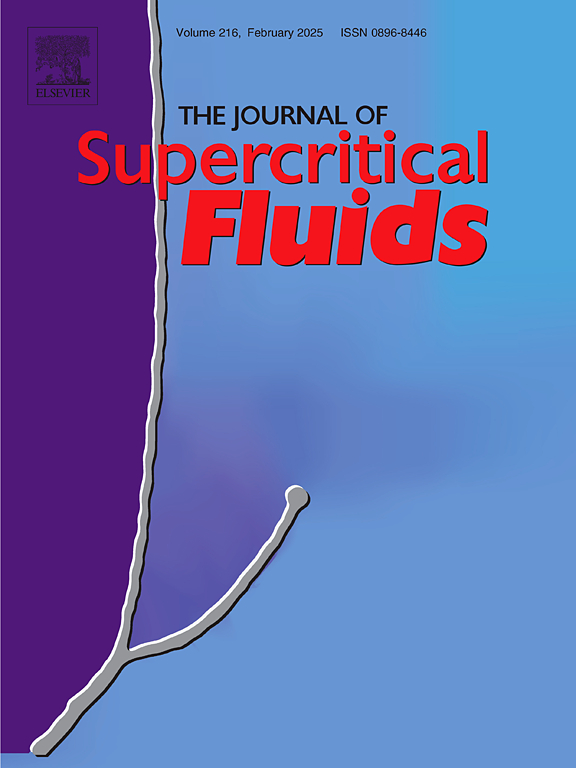Thermal and hydraulic performance of half-cone minichannel design for supercritical CO2 PCHE
IF 4.4
3区 工程技术
Q2 CHEMISTRY, PHYSICAL
引用次数: 0
Abstract
The Printed Circuit Heat Exchanger (PCHE) is one of the promising application of heat exchangers in supercritical CO2 (scCO2) power cycles due to its high compactness and structural rigidity. In this study, an innovative minichannel design with half-cone fin is proposed to increase performance of PCHE and its thermal and hydraulic characteristics are investigated numerically. With the increase of diverging-converging ratio and rib height, and the decrease of pitch, heat transfer can be improved. The flow direction of fluid changes constantly due to the variable cross-section, resulting in large changes in velocity and pressure gradients and increased pressure drop. However, comparing with the traditional straight channel and zigzag channel, it can transfer more heat at the same pump power, especially at relatively low Reynolds number flows. In summary, the half-cone fin can not only benefit increasing the compactness of PCHE, but also has good reliability in advanced scCO2 power cycles.
超临界CO2 PCHE半锥小通道设计的热水力性能
印刷电路热交换器(PCHE)由于其紧凑性和结构刚性好,是超临界CO2 (scCO2)动力循环中最有前途的热交换器之一。为了提高PCHE的性能,提出了一种采用半锥翅片的创新小通道设计,并对其热特性和水力特性进行了数值研究。增大散收敛比和肋高,减小节距,可以改善换热效果。由于截面变,流体的流动方向不断变化,导致速度和压力梯度变化较大,压降增大。但与传统的直线通道和之字形通道相比,在相同的泵浦功率下,它可以传递更多的热量,特别是在相对低雷诺数的流动中。综上所述,半锥翅片不仅有利于提高PCHE的紧凑性,而且在先进的scCO2功率循环中具有良好的可靠性。
本文章由计算机程序翻译,如有差异,请以英文原文为准。
求助全文
约1分钟内获得全文
求助全文
来源期刊

Journal of Supercritical Fluids
工程技术-工程:化工
CiteScore
7.60
自引率
10.30%
发文量
236
审稿时长
56 days
期刊介绍:
The Journal of Supercritical Fluids is an international journal devoted to the fundamental and applied aspects of supercritical fluids and processes. Its aim is to provide a focused platform for academic and industrial researchers to report their findings and to have ready access to the advances in this rapidly growing field. Its coverage is multidisciplinary and includes both basic and applied topics.
Thermodynamics and phase equilibria, reaction kinetics and rate processes, thermal and transport properties, and all topics related to processing such as separations (extraction, fractionation, purification, chromatography) nucleation and impregnation are within the scope. Accounts of specific engineering applications such as those encountered in food, fuel, natural products, minerals, pharmaceuticals and polymer industries are included. Topics related to high pressure equipment design, analytical techniques, sensors, and process control methodologies are also within the scope of the journal.
 求助内容:
求助内容: 应助结果提醒方式:
应助结果提醒方式:


